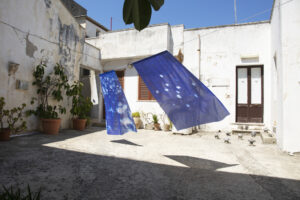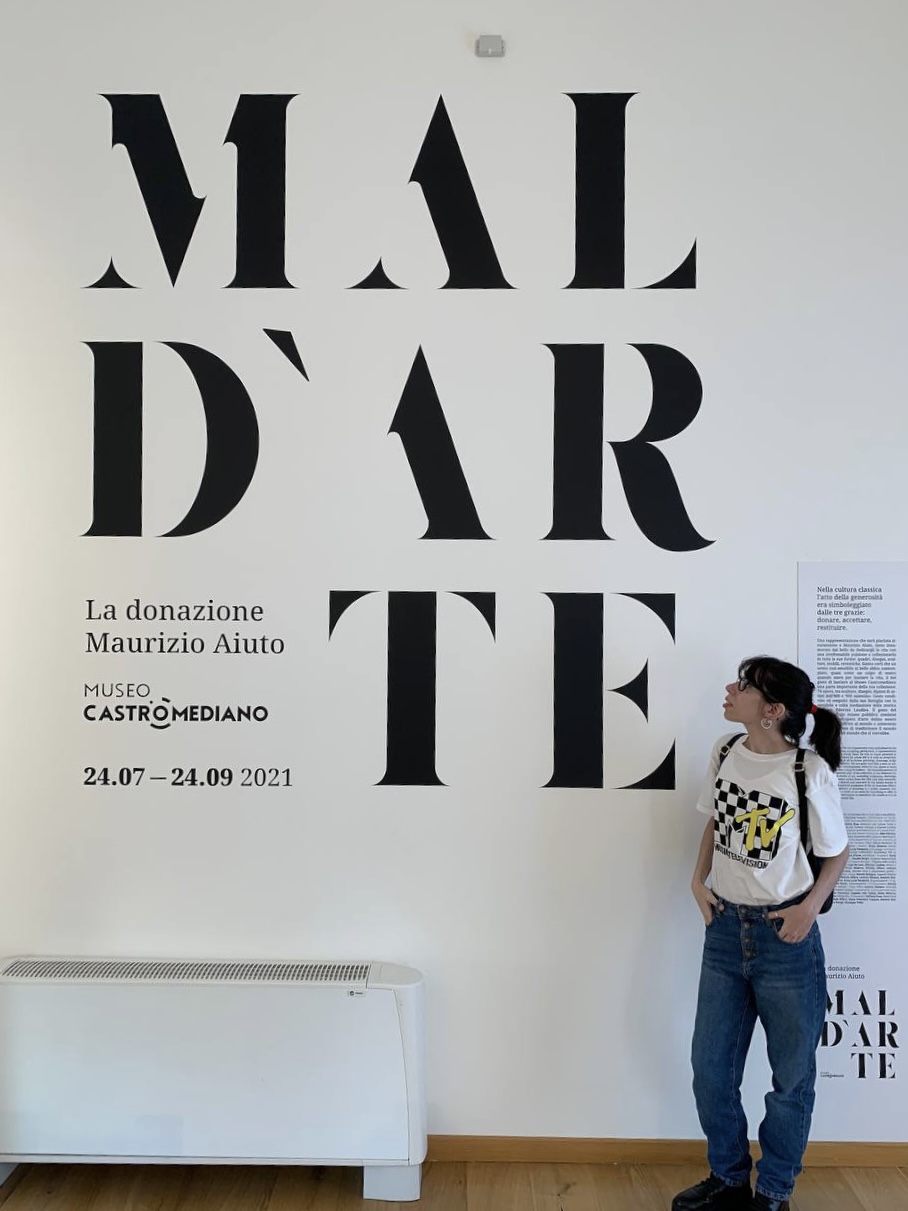Man, destined to develop an unprecedented union between nature and its imaginative world, has given life, since his appearance, to increasingly sophisticated inspiring artistic models. If these then intersect at the call of their own origins, they give rise to a refined time machine: where past and present side by side without one prevailing over the other. This is the case of the artists Lorenzo D’Alba and Cristina De Paola, protagonists of the Itaca exhibition, which, from 14 to 20 August, animated the spaces of the Court in via Roma 29 in the Salento municipality of Uggiano la Chiesa. Here, pursuing the voices of the Greek ancestors, who together with the Messapians, the Samnites and the Latins gave impetus to our culture, we walk through the salient points of the exhibition with the curator, Angelica Raho.

Lorenzo D’Alba and Cristina De Paola, Itaca, installation view, courtesy of the artists
Antonella Buttazzo: Lorenzo D’Alba and Cristina De Paola, with their works, challenge modernity. In fact, they seem to educate us to the beauty of memory, accompanying us, in the meantime, to the rediscovery of the roots that the Terra d’Otranto still holds today despite the frenetic advance of civilization. And the question arises spontaneously: how do the archetypes of the carapace and the cave, used by artists, fit into the Salento area?
Angelica Raho: The works by D’Alba and De Paola are affected by the Terra D’Otranto without any particular effort of memory. Even in these days of preparation, in which I had the opportunity to get to know the town of Uggiano, the Church and the people who live there better, I understood how some images remain suspended in the mind of a person and how naturally they can emerge both in the artistic practice as much as in the story. And in this I found many points in common with the way I experienced departures and returns to Salento. I find it fascinating how much this is a common feeling in all people who have chosen to leave home to follow a certain type of training, work, to seek stimulus elsewhere. During a studio visit, I asked Lorenzo D’ Alba for information about his bibliography and he pointed me to The Poetics of Space by Gaston Bachelard. In this text I found the metaphors of the shell and the nest that I saw again in the carapace, in D’Alba’s works, and in the cave, repeatedly reproposed in the works by De Paola. This was the basis of the critical text and of the construction of the exhibition. The carapace is the shell that breaks, looking for a new home, growing up and feeling cramped in a space that we feel no longer welcomes us. The cave, on the other hand, is the nest, it is a fruitful, maternal and uterine place that always awaits us when we return. I think they are very familiar images for all of us.

Lorenzo D’Alba and Cristina De Paola, Itaca, installation view, courtesy of the artists
Itaca is, for the spectator, a purifying rite, with which, through “a return to the origins”, achieves a restorative rebirth. How did this path come about? And why the reference to the mythical land sung by Homer in the Odyssey?
The choice of the title of the exhibition was made with enormous romantic transport, as if Itaca were not just a return but a tiring journey. I believe that in our case it is a stop at which we refuel. The exhibition does not intend to be a purifying ritual, the artists’ works have no apotropaic functions. The need is above all addressed to the Uggianese community itself. The proposal came from Andrea Ingrosso, the municipal councilor of Uggiano, with the desire to introduce contemporary art into the town. We gladly accepted this invitation and we hope it will lead to a collaboration.

Lorenzo D’Alba, Caùra, 2022, variable dimensions, patinated plaster, soot, pigments and graphite, courtesy of the artist
The Salento promontory offers the study of researchers rudimentary evidence of civilization, the presence of which escapes even the most precise chronologies. These remote populations used primitive artistic forms to make up for the needs of life and to repel the assaults of beasts and enemy tribes. In your opinion, what needs does art today, and Itaca in this context, respond to?
One of my favorite books is Roy Lewis’s The Evolution Man, it’s a delightful comedy about a family of hominids experiencing sudden civilization. One of the brothers, Alexander, begins to paint on the walls, he is asked what he was doing and for what use: he replies that he has decided to call that thing “art” and that it is useless. We set ourselves some not too simple goals. The most important thing for us is to have aroused an interest in the people of Uggiano la Chiesa. Many helped in many small needs that arose during the setting up, others were very intrigued and lent themselves to listening to the narration of the artists. For this reason, instead of keeping the exhibition open by appointment, since it was a private home, the artists decided to keep it open every evening. It was very emotional.

Cristina De Paola, What hath God wrought?, 2021, full HD video, color, stereo sound, 22.09.00 min., courtesy of the artist
What were the topics of the talk that concluded the exhibition on August 21st??
For the August 21 talk we invited Luca Coclite (artist and co-founder of the Studioconcreto space with Laura Perrone), Giuseppe De Mattia (artist and co-founder with Coclite and Claudio Musso of the Casa a Mare collective), Lorenzo Madaro (curator and professor at the Brera Academy of Fine Arts) and Brizia Minerva (art historian and curator at the Sigismondo Castromediano Museum in Lecce). We held a conversation about the importance of travel and movement for professionals in the art world, but above all we talked about how to make Puglia and Salento active in the context of contemporary art. So we started from the issues raised in the exhibition to open the wide-ranging discourse and also investigate the personal experience of the guests.

After obtaining the high school languages diploma, she continued her studies graduating in Art History at the University of Salento, with a bilingual thesis on the Pre-Raphaelites. Since then, she has been actively contributing as a columnist and collaborator with national blogs and with local magazines and TV programs.






NO COMMENT